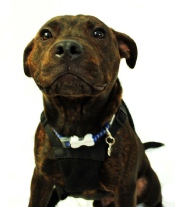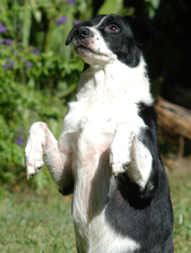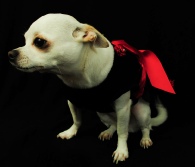
Copyright © 2013 CanineCancer.org.au All rights reserved.
There are a number of different types of skin cancer. Pathology testing must be undertaken to indicate which type of tumour is found. The correct treatment can only be administered in accordance with the tumour type, grading and staging.
Melanoma a benign tumour is known as melanocytoma. A malignant tumour is known as a malignant melanoma or melanosarcoma. Melanomas originate in the cells called melanocytes which produce a pigment called melanin.
Mast Cell Tumours originate in the bone marrow early in life before travelling to the skin and intestine. Mast cells are a part of the immune system. A benign tumour is known as a mastocytoma in people; in dogs they are generally all referred to as mast cell tumours, and the grade (from the pathologist at the laboratory) used to determine whether they are likely benign or malignant.
Haemangiosarcoma originates in the cells that line the blood vessels. In people it is known as angiosarcoma. If found on the skin it is dermal and is often less malignant. If found under the skin it is hypodermal/subcutaneous.
Cutaneous Squamous Cell Carcinoma is a malignant tumour of the outer layer of skin (epidermal).
Lymphoma There are 2 forms of lymphoma of dog skin. Epitheliotrophic which means that the cells are attracted to the surface layers is a slow form that is usually limited to the very surface until late in the disease process. It usually forms sores and scabs. The other form, often just called cutaneous lymphoma often occurs elsewhere in the body at the same time, especially lymph nodes. It usually forms deeper lumps rather than surface sores.
Histiocytic Sarcoma There are several different types of histiocytes in the body. The ones that cause this cancer are known as interstitial histiocytes. The disease is malignant and is described as localised or disseminated.
Benign Skin Tumours
There is a number of benign skin tumours that can affect dogs. Pathology testing will confirm if a lump on your dogs skin is benign or malignant.
Lipoma a common soft ‘flabby’ feeling tumour below the skin. These can get quite big (15cm diameter often) but are easily surgically removed. There is a very rare invasive form that invades around itself and is more difficult to remove. See a video of a surgical removal of a lipoma
Papillomas (warts) true warts are a contagious disease of puppies that occur as multiple growths and typically self-
Basal cell tumours often around the head of middle aged or older dogs. The malignant form, a basal cell carcinoma, is rare.
Sebaceous gland tumours wart-
Trichoepitheliomas hair follicle tumours
Histiocytoma typically in young dogs and will often self-
Plasma cell tumour smooth, hairless dome shaped growths. Plasma cells are the immune cells that produce antibodies. The malignant form of the disease is not a skin cancer, but is throughout the body and known as multiple myeloma.




